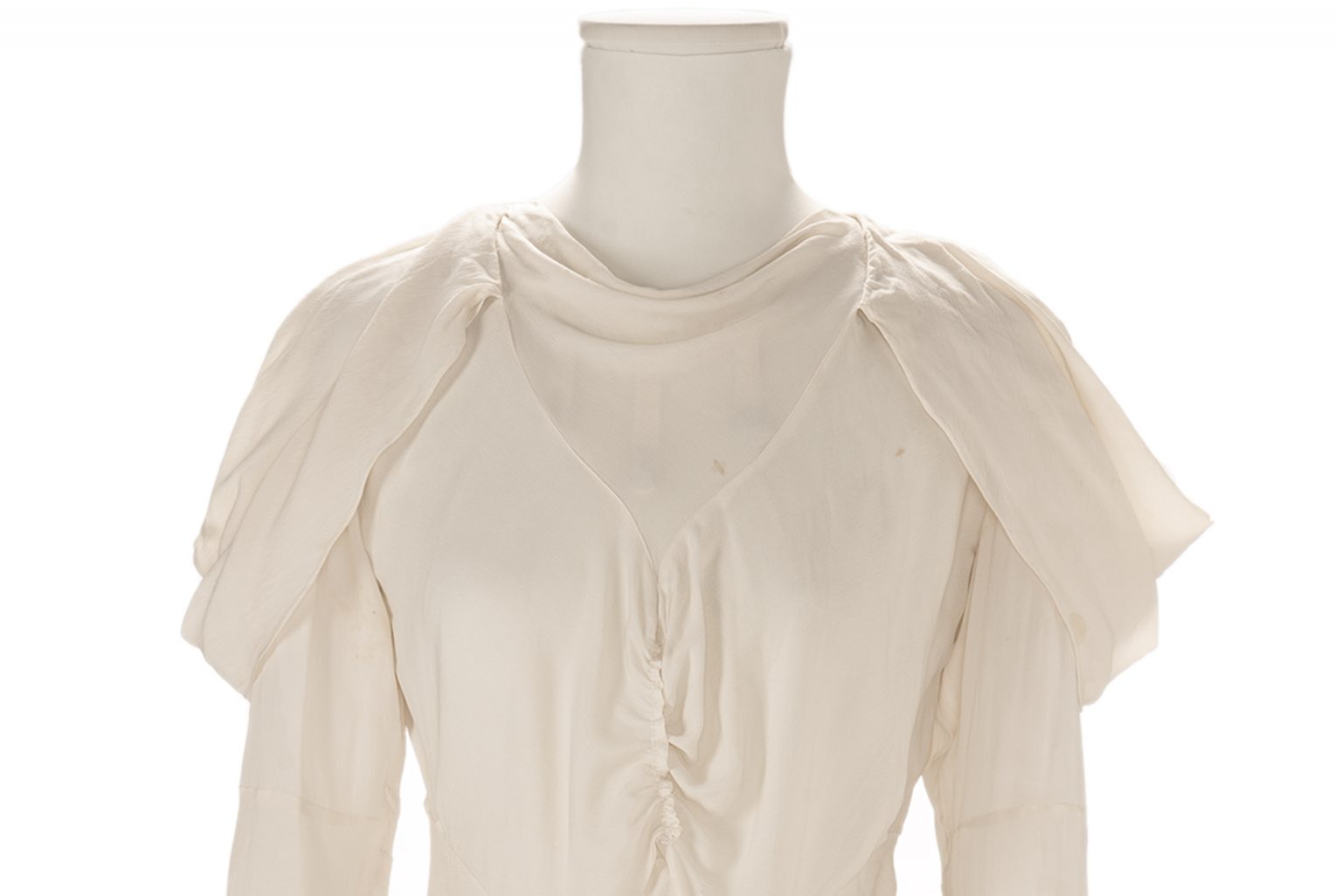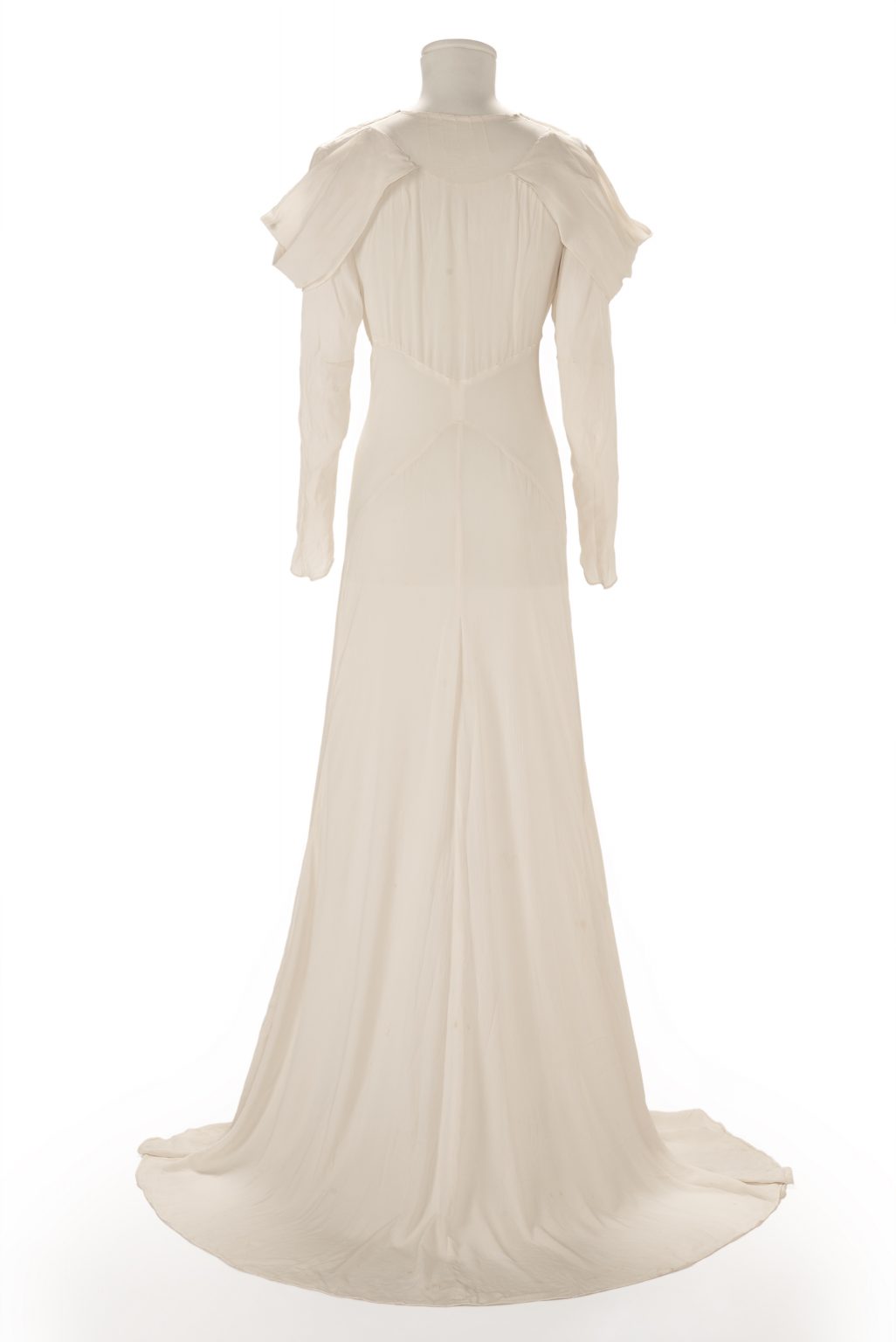
1930-1940 ca.
Bias-cut wedding dress in pearl-white crêpe de chine, circa 1930-40, Camilla Colombo Collection.
Details


Technical info
Women
The First World War left women with an experience of extraordinary mobility within the labour market. With the restructuring of organisational structures and a hierarchisation of roles, there was an increase in clerical work and activities considered to be specifically female emerged. After the First World War, women were employed in toy production, in the culinary sector, in the fashion industry and in cosmetics. Most of them, however, held roles that were considered to be less qualified and were therefore less well paid and with fewer career opportunities. A woman’s work outside the home was still
considered secondary and subordinate to her main function as mother and devoted wife. In Italy, the fascists, influenced by the Catholic Church, intervened with strict laws on women’s work. Arguments against women’s employment mainly focused on the idea of frivolity, as popular opinion believed women workers would spend their wages on make-up and clothes. In
1927 the fascist government passed a decree-law on women’s salaries, reducing them to half of the corresponding salaries of men. In addition, Law 221 of 1934 restricted the recruitment of women, excluding them from employment exams or allowing them few positions. Dreams of inclusion, professional fulfilment and equal pay were a long way away.